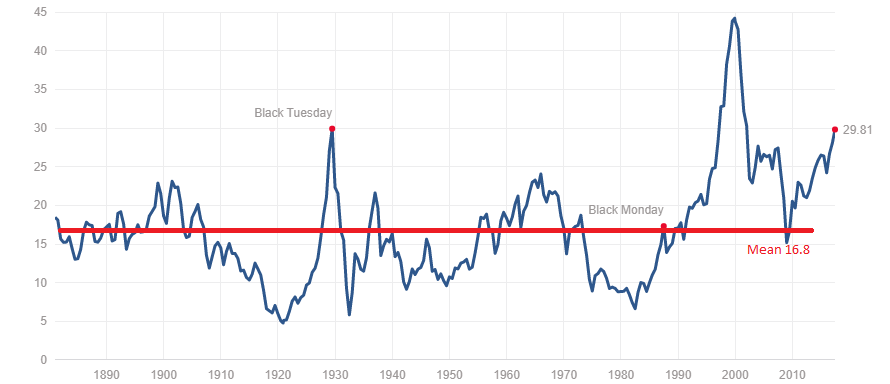China's Export Dependence: Vulnerability To Tariff Hikes

Table of Contents
China's remarkable economic growth has been significantly fueled by its export-oriented industrial strategy. However, this heavy reliance on international trade exposes the country to considerable vulnerabilities, particularly concerning tariff hikes imposed by other nations. This article will explore the extent of China's export dependence and analyze how vulnerability to tariffs impacts its economic stability and future growth prospects. We will examine the implications of this dependence and potential mitigation strategies.
The Magnitude of China's Export Dependence
Export Share of GDP
China's export-driven growth model is undeniable. For decades, a substantial percentage of its GDP has been directly attributable to exports. This represents a significant economic reliance on global markets, creating both opportunities and considerable risks.
- 2010-2020: China's export contribution to GDP consistently hovered around 20%, although this figure fluctuated yearly depending on global economic conditions and trade policies. (Source: World Bank data)
- Sectoral Concentration: A significant portion of these exports are concentrated in specific sectors, including electronics (smartphones, computers), textiles, and machinery. This concentration heightens vulnerability if tariffs target these specific industries.
- Over-reliance on Manufacturing: China's export reliance is heavily weighted towards manufacturing. A shift away from this model toward more service-based exports is a key strategy for reducing dependence and increasing resilience.
Key Export Markets
China's export success is tied to a network of crucial trading partners. However, over-dependence on specific markets poses significant risks.
- Top Destinations: The United States, the European Union, and ASEAN countries consistently rank as China's largest export destinations. Any trade disputes or economic downturns in these regions directly impact China's export revenue.
- Geopolitical Risks: Reliance on specific regions exposes China to geopolitical risks. Trade tensions with the US, for example, have demonstrated the vulnerability of this strategy.
- Diversification Strategies: To mitigate these risks, China needs to diversify its export markets, actively seeking new trading partners in Africa, Latin America, and other emerging economies.
The Impact of Tariff Hikes on China's Economy
Direct Impact on Export Revenue
Tariffs imposed by other countries directly reduce the competitiveness of Chinese goods in global markets. This leads to decreased sales, lower export revenue, and a negative impact on the bottom line for Chinese businesses.
- US-China Trade War: The US-China trade war provides a stark example. Tariffs imposed by the US on Chinese goods led to a significant reduction in Chinese export revenue in specific sectors like steel and aluminum. (Source: Peterson Institute for International Economics)
- Ripple Effect: The impact extends beyond direct exporters. Reduced export revenue leads to job losses in related industries, impacting employment and domestic demand.
Indirect Impact on Investment and Growth
The uncertainty caused by tariff hikes discourages foreign direct investment (FDI) in China. Businesses hesitate to invest in an environment with unpredictable trade policies.
- Reduced FDI: The threat of tariffs can cause multinational corporations to reconsider their investment plans in China, seeking alternative production locations with greater market stability.
- Slowed Growth: The combined effects of reduced export revenue and decreased FDI directly impact China's overall economic growth rate, potentially leading to slower GDP expansion.
- Capital Flight: Uncertainty can lead to capital flight as investors seek safer investment opportunities elsewhere.
The Role of Trade Wars
Trade wars, especially the US-China trade war, dramatically impacted China's export sector. These conflicts highlight the vulnerability of an export-dependent economy.
- Retaliatory Measures: China responded to US tariffs with its own retaliatory measures, escalating the trade conflict and harming both economies.
- Long-Term Consequences: The long-term consequences of such trade conflicts include damaged trade relationships, increased uncertainty, and lasting impacts on global supply chains.
Strategies for Reducing Export Dependence
Boosting Domestic Consumption
Reducing reliance on exports requires a shift towards a more consumption-driven economy. This involves policies aimed at stimulating domestic demand.
- Increased Disposable Income: Policies to increase disposable income among Chinese citizens are crucial. This could include tax cuts, wage increases, and social safety net improvements.
- Infrastructure Development: Investment in infrastructure projects creates jobs and stimulates economic activity, boosting domestic consumption.
- Promoting Domestic Tourism: Encouraging domestic tourism can significantly boost local businesses and overall economic activity.
Developing High-Value-Added Industries
Moving towards higher-technology and value-added manufacturing improves export competitiveness and reduces vulnerability to low-cost competition.
- Investment in R&D: Increased investment in research and development is crucial for developing innovative products and technologies.
- Technological Innovation: Focusing on innovation allows China to move up the value chain, producing higher-margin goods less susceptible to price competition.
- Skills Development: Investing in education and skills development will create a workforce capable of supporting high-value-added industries.
Strengthening Regional Trade Agreements
Participating in and fostering regional trade agreements helps diversify export markets and reduce dependence on any single trading partner.
- Regional Integration: Initiatives such as the Belt and Road Initiative aim to foster regional integration and create new trade opportunities.
- Reduced Reliance on Bilateral Trade: Regional agreements reduce dependence on bilateral trade relationships, making the economy less vulnerable to disruptions in any one specific market.
Conclusion
China's export dependence presents a significant vulnerability to fluctuations in global trade and, especially, to tariff increases. While exports have been a key driver of China's economic growth, the country needs to diversify its economy and reduce its reliance on international markets to ensure long-term stability. By boosting domestic consumption, developing high-value-added industries, and strengthening regional trade agreements, China can mitigate the risks associated with its current export-oriented model. Understanding and addressing China's export dependence is crucial for both its own economic future and the global economy. To learn more about mitigating the risks of China's export dependence, continue your research and explore strategies for diversifying trade and fostering economic resilience.

Featured Posts
-
 Months Long Lingering Of Toxic Chemicals After Ohio Train Derailment
Apr 22, 2025
Months Long Lingering Of Toxic Chemicals After Ohio Train Derailment
Apr 22, 2025 -
 New Business Hotspots Where To Invest And Grow In Country Name
Apr 22, 2025
New Business Hotspots Where To Invest And Grow In Country Name
Apr 22, 2025 -
 The China Factor Obstacles And Opportunities For Bmw Porsche And Other Automakers
Apr 22, 2025
The China Factor Obstacles And Opportunities For Bmw Porsche And Other Automakers
Apr 22, 2025 -
 Land Your Dream Private Credit Job 5 Crucial Dos And Don Ts
Apr 22, 2025
Land Your Dream Private Credit Job 5 Crucial Dos And Don Ts
Apr 22, 2025 -
 High Stock Market Valuations Bof As Case For Investor Calm
Apr 22, 2025
High Stock Market Valuations Bof As Case For Investor Calm
Apr 22, 2025
